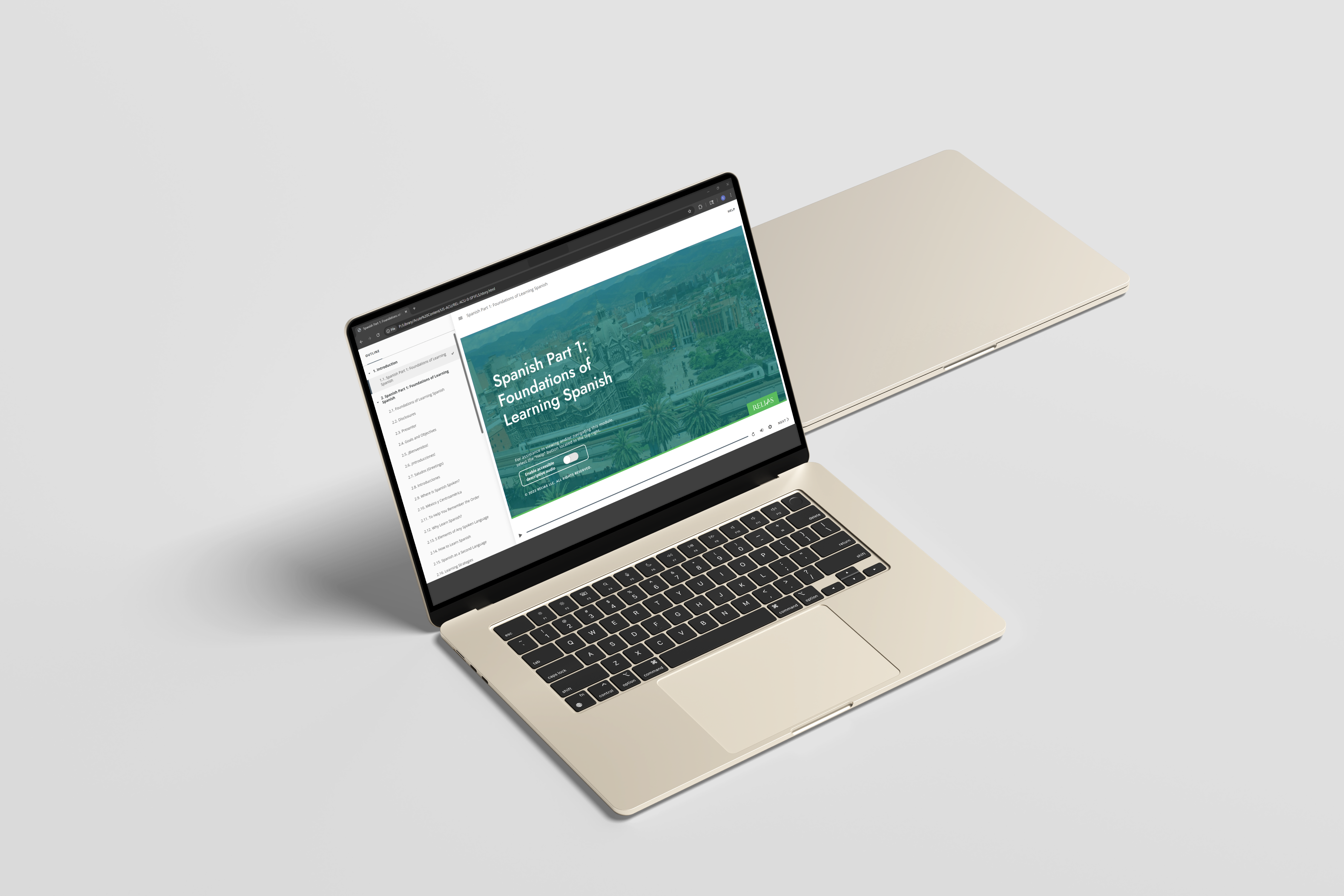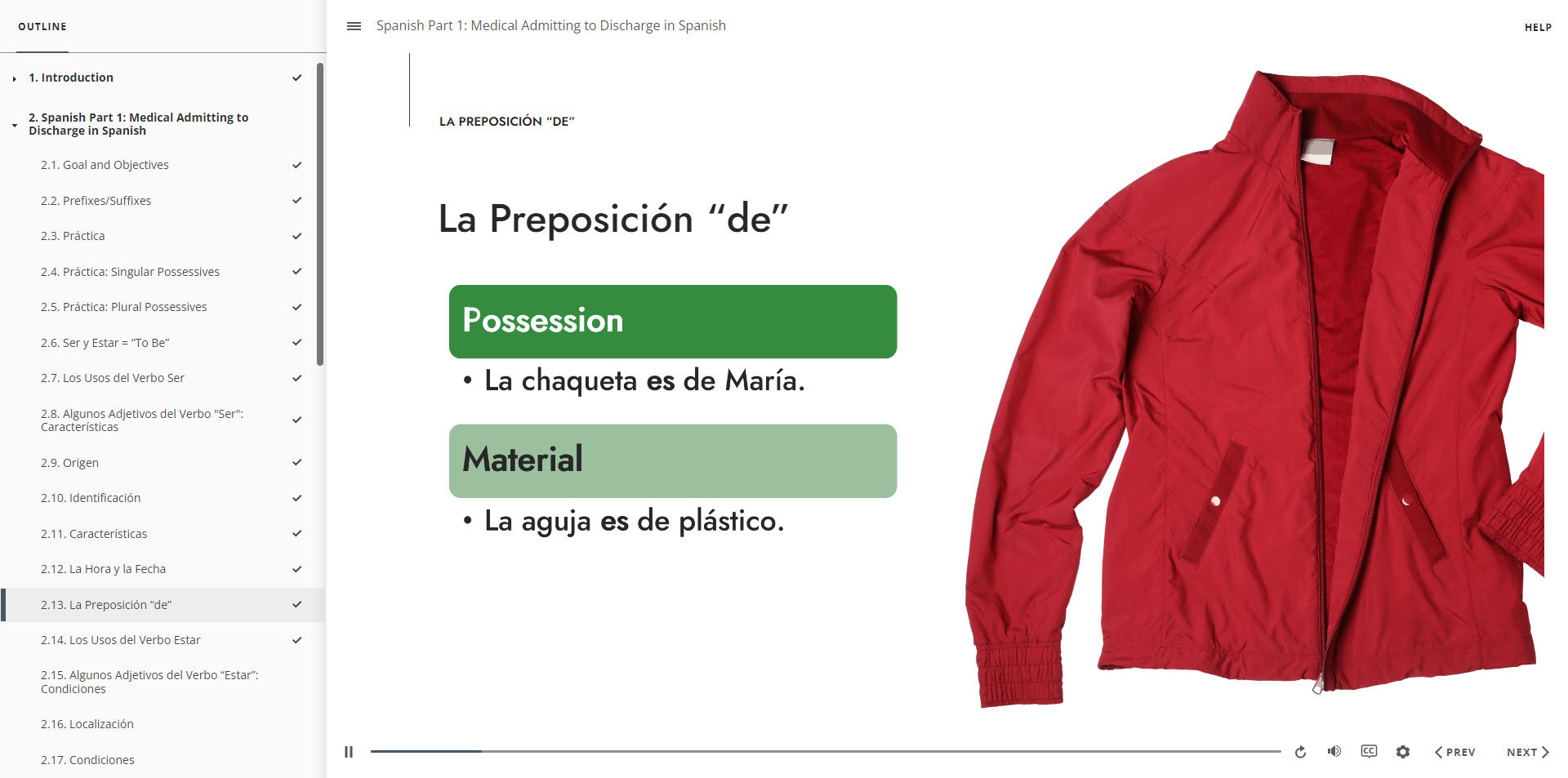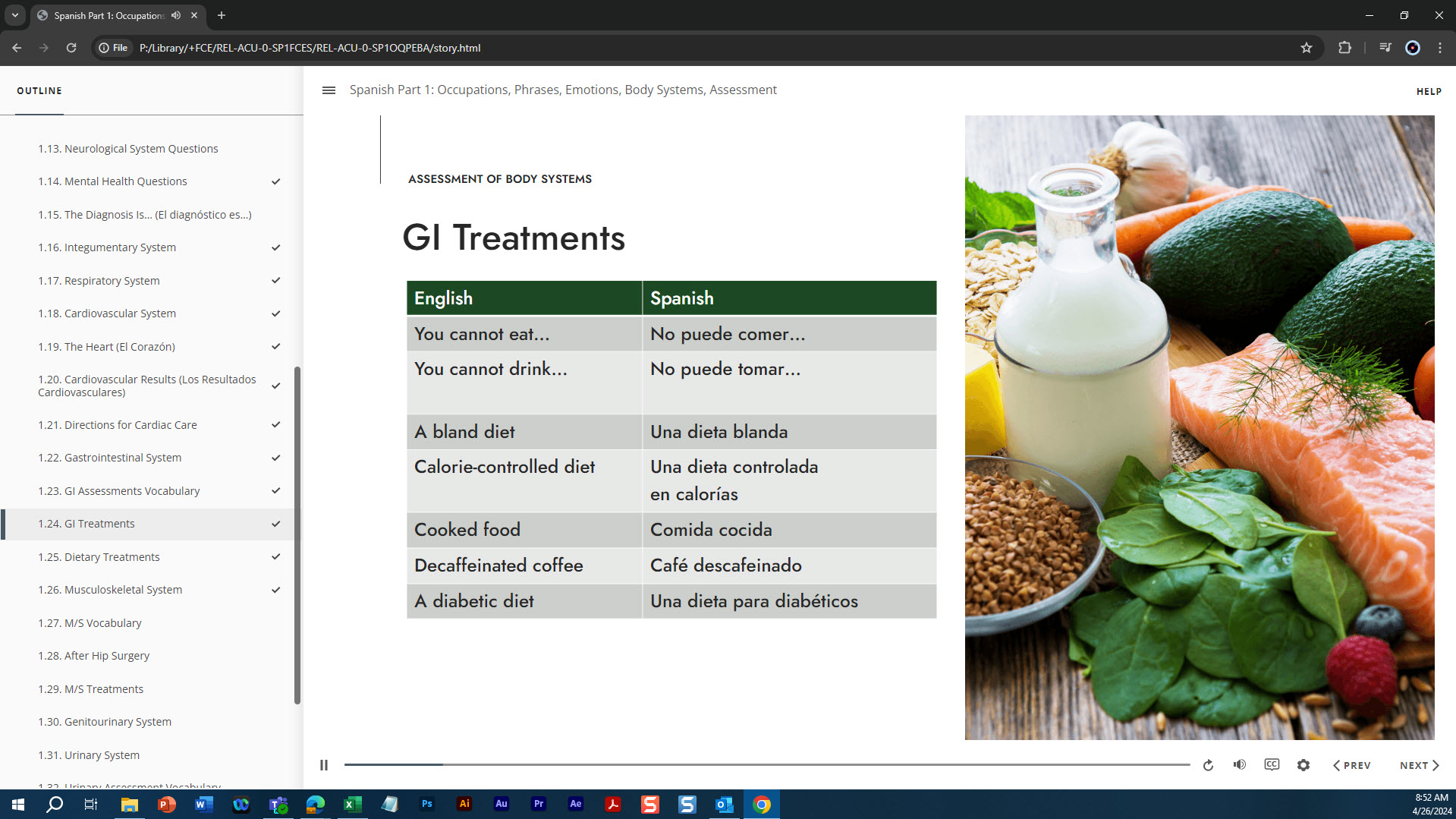
Learning Experience Design
What I did: Led and organized a team of eLearning developers and translators in making a series of webinar modules that teach nurses basic Spanish.
Results (as of July 2025): An average NPS of 79.78 after an average of 162 completions; it also gave me the idea for a new webinar template that saved Relias hundreds of hours of development time
Knowing how to speak with Spanish patients in their native language is an increasingly important skill in healthcare. Webinars can be a good way to teach this skill, but nurses and other front-line workers do not always have time in their schedule to attend one.
In situations like this, my team at Relias would take the audio and PowerPoints from our Subject Matter Expert's webinar recordings and split them across multiple Articulate Storyline 360 slides to meet regulatory requirements. This would also involve creating closed captions for accessibility. However, we hadn't made ones that used more than one language at a time before, a process that proved to be time-consuming.
As I realized how long it would take to build these, I talked to my manager and asked if I could create an official process and gather a team to help build and translate the modules. After he approved, I refined a process for building these modules, trained some fellow eLearning developers on how to build the modules, and enlisted our team's Spanish translators and one of the series' curriculum designers to proofread the closed captioning and PowerPoint slides for accuracy.

Based on feedback from my colleagues and I manager, I constantly refined the process and the documentation I made so it could be more understandable and efficient. In one instance, my manager and I compared Microsoft Azure Speech Studio to the Adobe Premiere Pro closed captions we had been making and found Speech Studio to be far more accurate when handling two languages at time. I also helped settle a disagreement between the translators and the curriculum designer by bringing them together to compromise on who gets final approval of the translations (all three of them learned Spanish in different ways and specialized in different dialects). All the while, we were in frequent communication with the subject matter expert and the webinar recording coordinator to get the recordings completed in a timely manner and get any needed changes to the audio. All modules went under multiple rounds of review. Together, we completed over 15 webinars before the end of the year.

The FCE series webinars released in January 2024. As of July 2025, they have an average of 162 completions and a Net Promoter Score of 79.78. The process refinements my collaborators and I made to building webinars also became a constantly-refined standard
After seeing how time consuming it was to build these modules as narrated Storyline 360 slideshows, I asked a stakeholder why we built them this way. After the stakeholder informed me that it was a way to meet regulatory requirements for attendance time, I created a prototype of an Articulate Rise template that could address this need while being simpler to use (a video in a shell where scrubbing could be disabled if needed). By doing so, the webinar courses could be faster to build and more mobile-friendly while still meeting regulatory standards.
After my new process was iterated on, adapted by different contributors who worked on different product lines, and approved by my department's leadership, it has saved tens of hours in the building of each webinar. I also became the main contributor in charge of maintaining the webinar process documentation and merged all of its different files into one easy-to-access document. I have also collaborated with others to update this documentation based on different products Relias sells to customers.